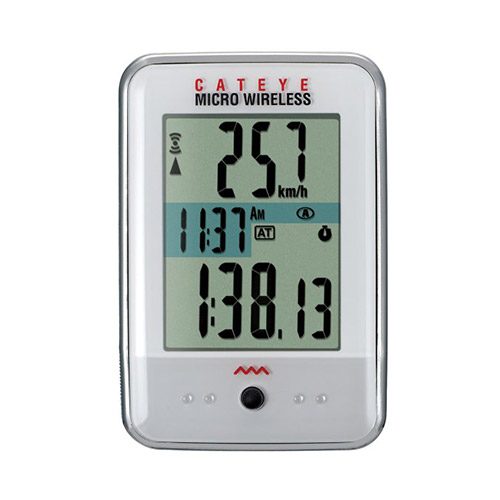

We then tried our more powerful SolarStorm LED headlights which have two CREE-led units and found that the power cable was radiating a signal with a large primary pulse and a smaller secondary pulse at 49.3 kHz.

We then wrapped a length of wire around the Moon Nova 80 LED headlight to capture the RF being emitted by the light and when connected to our spectrum analyser there was a general increase in RF noise between 0Hz and 10Mhz.Ĭonnecting this to the scope showed several different spot frequencies being generated with a strong pulsing signal at 7.8kHz as shown in the screen shot below. The scope screenshot below shows the pulse showing the frequency and waveform. The scope screenshot below shows the pulse from the scope. When passing the magnet past the sender unit a pulse was being generated at 19.16 kHz with a time period of approx. In order to try to resolve this problem and find which frequencies are being used, we wrapped a wire around the sender on the bike computer to act as an antenna and connected this to our scope. As this wasn’t possible on the handlebars we removed the computers and ordered a different brand of wired computer which runs without any problems regardless of the LED lights fitted on the handlebars.

When we returned home we experimented with different locations of the LED lights and also the bike computer, the computer would work with the LED lights running but only if the light and the computer were separated by over one meter. Turning off the LED lights restored the signal so there was a problem with the LED lights transmitting on a frequency close to or a harmonic of the wireless signal coming from the Cateye wheel sender unit which blocked the bike computer from receiving the senders signal. The new computers seemed to be working without any problems until we came to switch on our LED Moon NOVA 80 lights and then the signal from the bike computers sender unit stopped reaching the Cateye computer and the display showed that no signal was being received. We purchased Cateye Micro Wireless bike computers (model CC-MC200W) to use on the bikes as they are nice and compact computers and have enough functionality for our needs to keep track of speed and the distance of the rides.
#CATEYE MICRO WIRELESS FULL#
* The life of the pre-installed battery may be shorter.We recently purchased a pair of Specialized Crux E5 cyclocross bikes from Primera Sports in Bournemouth which we plan to use for longer road rides and some off-road and keep our full suspension mountain bikes for just off-road rides. Includes FlexTight bracket for quick and secure fixing to stems and oversized handlebars.
#CATEYE MICRO WIRELESS INSTALL#
"Menu screen" that makes it easy to change computer settings.Ī wireless sensor that is easy to install and adjust and has a sense of unity with the front fork.
#CATEYE MICRO WIRELESS MANUAL#
Manual start / stop can also be selected, and start / stop operation is possible with the button. Since hidden data is also measured in the background, it is possible to check the data when redisplaying.Įquipped with a night mode, making it easy to check data at night. Data can be confirmed quickly by narrowing down the functions. The time is always displayed.Ī programmable display that allows you to assign your favorite functions to the upper part of the constant display.Įquipped with a function selection function that can hide unnecessary functions depending on the situation. In addition to the data of the basic 8 functions, a stopwatch that can start and stop individually is included (when using auto mode). A customizable wireless computer that allows you to create the display you want.


 0 kommentar(er)
0 kommentar(er)
